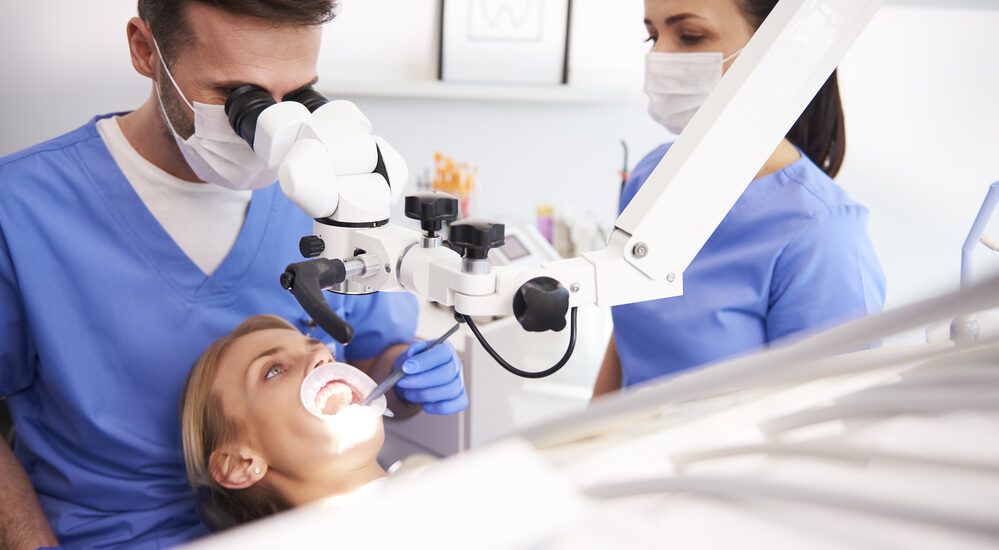In the realm of infectious diseases, the world has seen its fair share of pandemics and epidemics, each presenting unique challenges to global health. Among these, two diseases have left an indelible mark on history: the Coronavirus Disease 2019 (COVID-19) and Acquired Immunodeficiency Syndrome (AIDS). While vastly different in their modes of transmission, symptoms, and treatments, both have significant implications for dental treatment and the practice of dentistry, especially during times of crisis.
The emergence of COVID-19 in late 2019 thrust the world into a state of uncertainty and fear. With its rapid spread and devastating impact, governments worldwide implemented stringent measures to curb transmission, including lockdowns, social distancing, and the closure of non-essential services. Dentistry, being a profession intimately linked with close patient contact and aerosol-generating procedures, faced unprecedented challenges in providing care while ensuring the safety of both patients and healthcare workers.
Conversely, AIDS, caused by the Human Immunodeficiency Virus (HIV), has been a persistent global health concern since its identification in the 1980s. Unlike COVID-19, which primarily spreads through respiratory droplets, HIV is transmitted through bodily fluids, most commonly through unprotected sexual intercourse or sharing contaminated needles. However, both diseases share similarities in terms of stigma, misinformation, and the need for comprehensive preventive measures.
From a dental treatment perspective, the COVID-19 pandemic has led to a paradigm shift in how oral healthcare is delivered. Routine dental procedures, such as cleanings and check-ups, were postponed or limited to reduce the risk of viral transmission. Additionally, the use of personal protective equipment (PPE), including masks, face shields, and gowns, became standard practice in dental offices worldwide. Moreover, stringent infection control protocols were implemented, including enhanced disinfection of surfaces and equipment, and the adoption of pre-procedural mouth rinses to reduce the viral load in aerosols.
Similarly, the AIDS epidemic necessitated significant changes in dental practice to minimize the risk of transmission in the dental setting. Dentists began implementing universal precautions, treating every patient as potentially infectious, regardless of their HIV status. Disposable barriers, such as gloves, masks, and protective eyewear, became essential components of dental procedures to prevent exposure to blood and other bodily fluids. Furthermore, strict sterilization protocols were enforced for reusable instruments and equipment to ensure their safe reuse between patients.
Despite these precautions, both pandemics have highlighted the importance of access to dental care, particularly during emergencies. An emergency dentist crisis can arise during times of widespread disease outbreaks, as patients may delay seeking treatment due to fear of exposure or overwhelmed healthcare systems. In the case of COVID-19, dental emergencies such as severe tooth pain, trauma, or infection can escalate if left untreated, potentially leading to complications and further burdening already strained healthcare resources.
Similarly, individuals living with HIV/AIDS may experience oral manifestations of the disease, including oral thrush, periodontal disease, and oral lesions, which require prompt intervention by dental professionals. Failure to address these issues in a timely manner can not only compromise oral health but also exacerbate systemic complications and decrease the quality of life for affected individuals.
Moreover, the intersection of COVID-19 and AIDS underscores the importance of addressing disparities in healthcare access and delivery. Marginalized communities, including racial and ethnic minorities, the economically disadvantaged, and individuals living with HIV/AIDS, are disproportionately affected by both diseases, facing barriers to care such as lack of insurance, limited transportation, and stigma.
In response to these challenges, dental professionals must adopt a multifaceted approach to ensure equitable access to dental treatment during public health crises. Telehealth and virtual consultations can be utilized to triage dental emergencies, provide patient education, and offer remote support for oral health management. Community-based outreach programs can target underserved populations, offering preventive services, oral health education, and referrals for follow-up care.
Furthermore, collaboration between dental and medical professionals is essential for addressing the complex oral health needs of individuals living with HIV/AIDS, including the management of oral complications, coordination of care, and integration of dental services into comprehensive healthcare settings.
In conclusion, the COVID-19 pandemic and the ongoing HIV/AIDS epidemic have profound implications for dental treatment and oral healthcare delivery. While these diseases differ in their modes of transmission and clinical manifestations, both highlight the importance of infection control, access to care, and the role of dental professionals in promoting oral and systemic health. By addressing these challenges through innovative approaches and collaborative efforts, we can mitigate the impact of pandemics on dental treatment and ensure that all individuals have access to quality oral healthcare, even in times of crisis.

